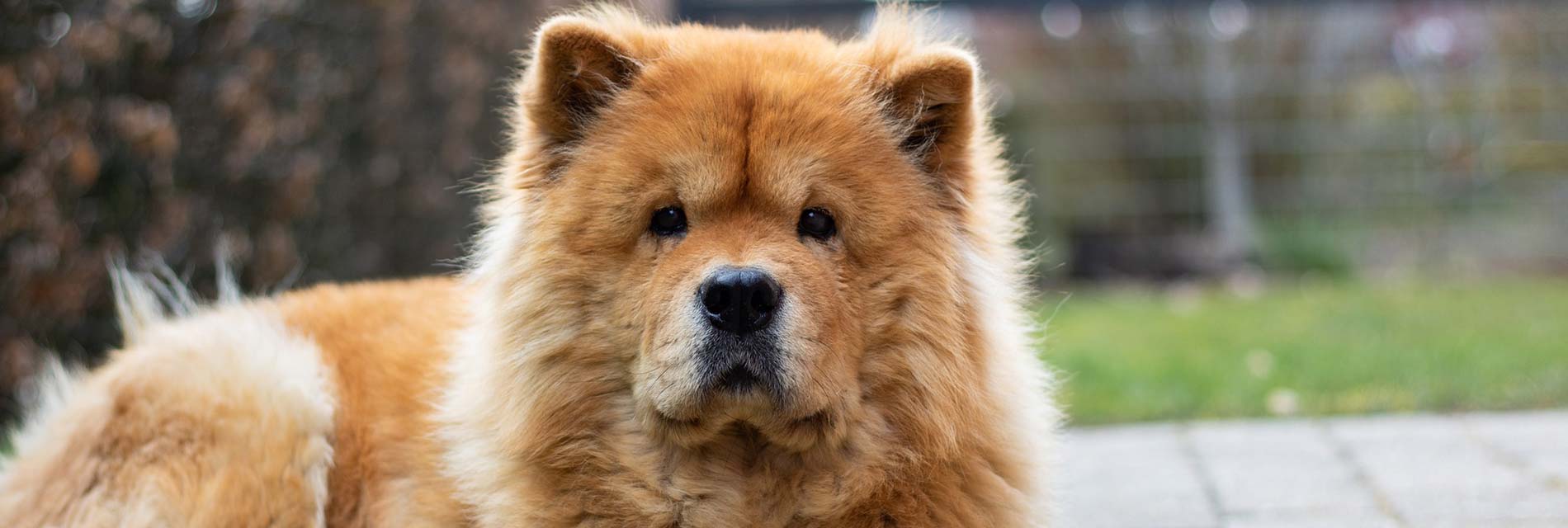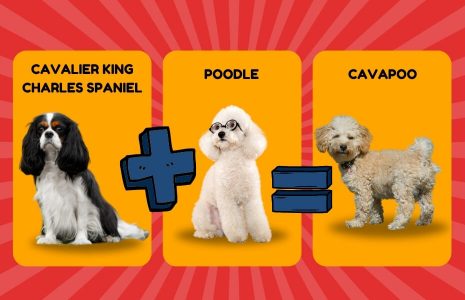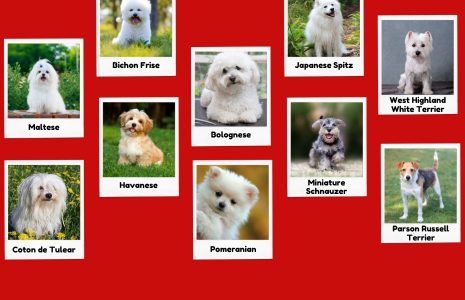A Closer Look at Chow Chow Dog Breed: Physical Features, Characteristic Traits, Health and Lifespan


The Chow Chow breed is considered to be one of the oldest breeds of dog in the world. Their strikingly dignified and serious expression has captured the hearts of dog lovers around the world. Coupled with its distinctive lion-like mane, and independent personality, the Chow Chow has quickly become a beloved companion dog for many families.
Are you also thinking of adopting a Chow Chow?
Then this article is for you. Here we will delve into the history and origin of the Chow Chow, its physical characteristics, personality traits, nutrition and grooming needs, major health issues, and training and exercise requirements.
Chow Chow Dog Breed: At A Glance

You can check out the Chow Chow dog breed overview chart given below to quickly learn important information about the breed:
| Category | Chow Chow Dog Breed Facts |
| Breed Group | Non-Sporting |
| Place Of Origin | China |
| Size | Medium |
| Height | 17-20 inches |
| Weight | 45-70 pounds |
| Temperament | Independent and serious-minded; sometimes aloof but loyal and fiercely protective |
| Unique Feature | Blue-black Tongue, Lion-like mane around head and shoulders, 44 teeth instead of 42 |
| Life Span | 8-12 years |
| Major Health Issues | Hip and Elbow Dysplasia, Patella luxation, Cataracts, Stomach Cancer, Autoimmune Thyroiditis, Gastric Torsion |
| Coat Length, Type and Colors | Medium length; Double-coated; Black and Blue, Red, Cream, Cinnamon, |
| Energy Level | Laid-back |
| Intelligence | Fairly intelligent |
| Exercise Needs | Moderate |
| Trainability | Slightly difficult because of their independent temperament with a stubborn streak |
Chow Chow Dog Breed: Origin and History

There are several schools of thought on the origin and history of the Chow Chow breed. According to one school of thought, this breed is around 3,000 years old and are related to large dogs that originated first in the arctic circle and then migrated to Mongolia, Siberia and Tibet. These dogs had lion-like facial features and blue Tongues.
It is further speculated that these dogs came to China with the Mongolian army when they invaded China around the 13th century AD. The successors of these dogs came to be known as the Chow Chow in China.
While the exact origin of the breed is still a subject of debate, there is sufficient evidence that suggests that the Chow Chow dog breed existed around 206 BC. Dogs bearing a lot of resemblance with the Chow Chow is seen depicted in artifacts from Han Dynasty in China.
The Chows were used for a variety of purposes in ancient days…
Throughout their long history, the Chows have served in multiple roles thanks to their incredible strength and stamina. Common people in China used them for guarding their property and possession and for herding cattle and other livestock. The chows also worked as farm dogs and assisted their masters in day-to-day tasks. During the winter season, they hauled sledges.
Not only that, a Bas relief from the Han Period in China depicts an image of 8 hunters with nets over their shoulders and accompanied by dogs bearing resemblance to Chow Chows. It suggests that the Chows also served as hunting dogs in ancient China.
The Chow Chow gained popularity in the Western world in the late 18th century when merchants and traders brought them back to England and Europe. Queen Victoria herself was a fan of the breed, and she helped popularize it by owning several Chows. The Chow Chow was officially recognized by the American Kennel Club (AKC) in 1903 and has since become a beloved breed in the United States.
Chow Chow Dog: In Depth Overview of The Breed
Continue reading below to get an in-depth overview of the Chow Chow dog breed:

Physical Characteristics
The Chow Chow is a medium-sized dog that stands at around 17-20 inches tall and weighs between 45-70 pounds. They have a very distinctive appearance due to their thick, dense coat. The coat also comes in various colors, including cream, red, blue, cinnamon, and black.
The coat can be solid, or it may have shades of these colors, giving the Chow Chow a unique and beautiful look. The Chow’s coat is so thick that it gives the impression of a mane, giving these dogs the nickname “lion dog.”
Apart from their coat, the Chow Chow’s most distinguishing physical feature is their blue-black tongue, which is a trait shared with only another dog breed – the Chinese Shar-Pei. They also have small, triangular ears that are set high on their head and stand upright. Their eyes are deep-set and almond-shaped, which gives them a serious and almost regal expression. The Chow Chow’s tail is thick and bushy, and it curls up and over the back.
Personality Traits
The Chow Chow is known for its independent and dominant personality. They are not the most affectionate breed and are not prone to displays of affection like other breeds. However, this does not mean that they are not loyal or loving towards their family. They are fiercely protective of their loved ones and will not hesitate to defend them if they feel threatened.
Due to their independent nature, Chow Chows can be a bit stubborn and challenging to train. They have a strong-willed personality and need a firm and consistent hand to guide them.
Hence, early socialization and training are crucial for this breed to prevent them from becoming aggressive and overly protective. Properly trained and socialized Chow Chows can make excellent companions and are known to be calm and well-mannered.
Nutrition and Grooming Needs
The Chow Chow’s thick coat requires regular grooming to keep it looking its best. They have a double coat, with a soft, dense undercoat and a coarse, straight outer coat. This means regular brushing is necessary to prevent matting and tangles. They tend to shed heavily twice a year, and during this time, daily brushing is recommended to keep their coat in good condition.
Chow Chows are also prone to skin allergies and need to be bathed regularly with a mild shampoo to keep their skin clean and healthy. Their ears should also be checked and cleaned regularly to avoid any infections. As with all dog breeds, their nails should be trimmed regularly to prevent them from becoming too long and causing discomfort.
When it comes to nutrition, Chow Chows have a medium energy level and require a well-balanced diet that is rich in protein. In addition, their diet should include essential fatty acids, such as omega-3 and omega-6, to keep their coat healthy and shiny. It is important to monitor their food intake and not overfeed them, as they can easily become overweight, which can lead to various health problems.
Major Health Issues and Lifespan
According to AKC, the Chow Chow has an average lifespan of 8-12 years. However, with healthy diet and good care, it can live up to 15 years. But like all dog breeds, Chow Chows are also prone to certain health issues. We have explained these health issues in detail below:
Hip and Elbow Dysplasia
One of the most common health concerns for this breed is hip and elbow dysplasia. This is a condition where the incorrect development of hip or elbow joints causes abnormal wear and tear, inflammation, and pain. Hip and elbow dysplasia can lead to reduced mobility, lameness, and osteoarthritis in dogs.
Some of the common symptoms of hip and elbow dysplasia are:
- Decreased activity or reluctance to move
- Difficulty or pain when rising, jumping, running, or climbing stairs
- Limping or favoring one leg over the other
- Swelling, stiffness, or crepitus (cracking sound) in the joints
- Loss of muscle mass or enlargement of the joints
- Reduced range of motion or abnormal gait
Based on the symptoms given here, if you suspect that your Chow is suffering from hip and elbow dysplasia, then you should take them to the vet’s office as soon as possible. The vet will check for clinical signs, carry out physical examination and order radiography and other imaging techniques like CT scan or arthroscopy to confirm the diagnosis.
Patellar Luxation
The Chow Chow dog breed is also prone to patellar luxation, a condition where the kneecap slips out of place in the groove of the thigh bone (femur). This can cause pain and lameness in dogs. Patellar luxation can be medial (towards the inside of the leg) or lateral (towards the outside of the leg). It can affect one or both hind legs, but never the front legs.
Here are some of the most common symptoms of Patellar Luxation in dogs:
- Intermittent or persistent lameness
- Skipping or hopping gait
- Swelling or stiffness of the knee joint
- Yelping or whimpering in pain
- Reduced physical activity or reluctance to jump or run
Depending on how often your Chow Chow’s kneecap dislocates and how easily it retreats to its normal position, Patellar Luxation can vary from mild to severe. The severity of this medical condition is usually graded on a scale of I to IV – I is the least severe, and IV is the most severe.
Eye Issues
Chow Chows are also at risk of developing eye problems, such as cataracts, entropion, and ectropion. These eye issues in dogs have been briefly discussed below:
- Progressive retinal atrophy (PRA): This is a genetic condition where the retina degenerates over time, leading to complete blindness. There is no cure for PRA, but it can be detected with a DNA test.
- Ectropion: This is a condition where the eyelid rolls outward, leaving the eye exposed and vulnerable to irritation and infection. It can be treated with medication or surgery.
- Cataracts: This is a condition where the lens of the eye becomes cloudy, impairing vision. Some of the major causes of this condition are aging, genetics, or injury. It can be treated with surgery.
These issues can cause discomfort and may require surgery to correct. Hence, it is essential to have regular check-ups with a veterinarian to detect any potential health issues early on and ensure proper treatment.
Training and Exercise Needs
As mentioned earlier, Chow Chows can be a bit challenging to train due to their independent nature. However, this does not mean that they are not trainable. With consistent and positive reinforcement training, they can learn obedience and basic commands. Moreover, it is important to start training and socializing from a young age to establish a strong bond and prevent any behavioral issues from developing.
Chow Chows have a moderate energy level and do not require intense exercise like some other breeds. Therefore, a daily walk for 30-40 minutes or play session in the yard is enough to keep them happy and healthy. They also enjoy mentally stimulating activities, such as puzzle toys, to keep their minds active.
Is The Chow Chow Dog a Suitable Pet For Me?

Chows are highly intelligent and loyal dogs. However, they have a highly independent streak in them and can be stubborn. They are also wary of strangers and most of the time not in the mood for affection. Hence, they are not suitable pets for first-time owners. Furthermore, Chow Chows require a lot of training and socialization from an early age so that they can develop into well-rounded dogs.
Moreover, with early and consistent training, chows make good pets, but they are not very affectionate and playful by nature. Hence, they generally don’t dol well in a household with toddlers and small children.
In addition, if you are looking for a dog who will accompany you on your daily runs, and hikes, then the Chow Chow is not the one for you.
On the other hand, the Chow Chow is perfect for someone who is:
- an experienced owner
- has no small children in their family
- looking for a low-maintenance dog that can live in an apartment
To sum up, the Chow Chow is a unique and beautiful breed with a rich history and distinctive physical characteristics. While they may not be the most affectionate breed, they make loyal and loving companions to those who can spare the time and have the experience to train and socialize them.
So, what do you think of the Chow Chow dog breed? Do you think they will be a suitable companion dog for you?








Leave A Comment